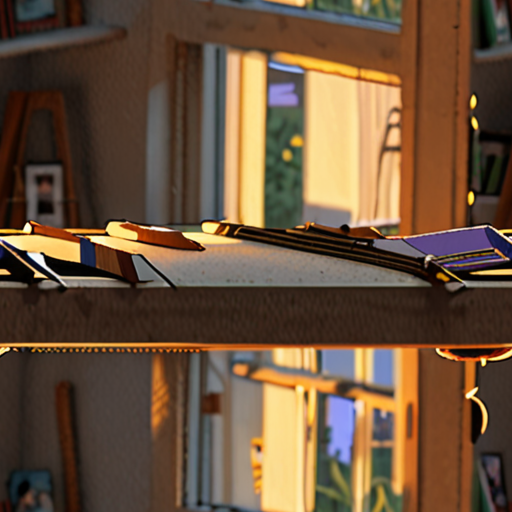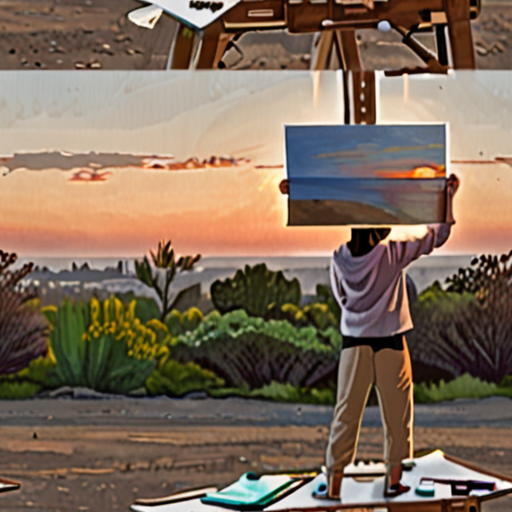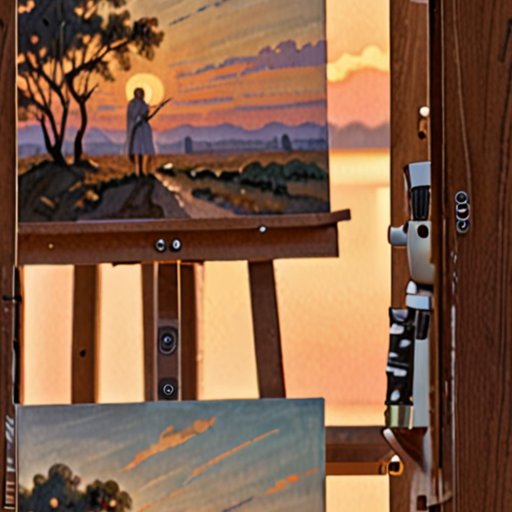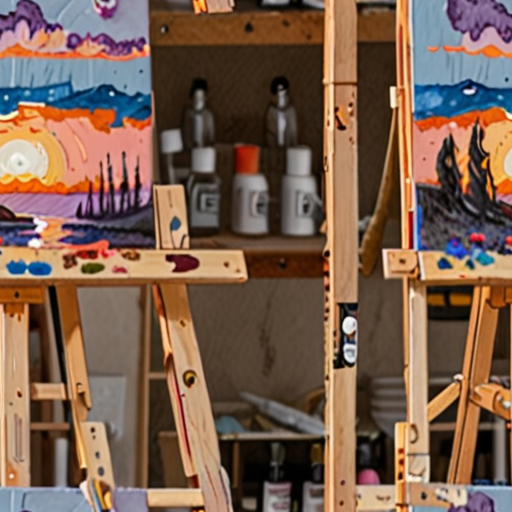
The Easiest Painting Technique
When it comes to painting, there are numerous techniques to choose from, each with its own level of complexity.
- Clean Pour Acrylic Paint Pouring: This technique is considered one of the simplest and most effective ways to create beautiful paintings.
- Wash Technique: This method involves applying a thin layer of transparent paint over a base coat, allowing for subtle color variations.
- Drybrushing: By dragging a almost-dry brush across the canvas, artists can achieve textured, rough effects.
- Splatter Painting: This dynamic technique involves flicking or splattering paint onto the canvas, often resulting in unique, expressive patterns.
- Stenciling: Using stencils to apply paint allows for crisp, precise designs and patterns.
These techniques offer a great starting point for beginners, allowing them to experiment and find their preferred style.
Key Considerations
When choosing a painting technique, consider the following factors:
- Personal Style: Think about the type of art you enjoy creating and what suits your skill level.
- Materials: Choose techniques that work well with your preferred paints and brushes.
- Time and Effort: Some techniques require more time and effort than others, so consider your schedule and energy levels.
Getting Started
To begin exploring these techniques, start by gathering basic supplies, such as acrylic paints, brushes, and canvases.
Watch online tutorials or take classes to learn the basics of each technique and gain confidence in your abilities.
Practice regularly to hone your skills and develop your personal style.
Do You Wet Your Brush When Using Acrylic Paint?
As a DIY enthusiast and artist, I’ve often wondered whether wetting my brush is necessary when working with acrylic paint.
- I’ve found that acrylic paint is indeed water-based, which makes it quite versatile.
- While you don’t necessarily need to wet the paint before applying it, using water can be beneficial in certain situations.
If your paint dries on the palette or canvas, a damp brush can easily revive it, allowing you to continue working without having to start over.
The Benefits of Wetting Your Brush
Wetting your brush can have several advantages when working with acrylic paint:
- Improved blending: A damp brush can help blend colors together more smoothly, resulting in a more seamless transition between hues.
- Reduced paint buildup: By using a damp brush, you can prevent paint from building up on the surface, reducing the risk of uneven textures and unwanted patterns.
- Easier clean-up: A damp brush can also make cleaning up spills and messes much easier, as the paint will come off more easily.
When Not to Wet Your Brush
However, there are instances where wetting your brush may not be necessary or even desirable:
- When working with thick paint: If you’re using a thick, heavy-bodied paint, it’s usually better to work with a dry brush to avoid muddying the color.
- When achieving texture: In some cases, you may want to create textured effects by dragging a dry brush through the paint.
Best Practices for Working with Acrylic Paint
To get the most out of your acrylic paint, remember to:
- Maintain a clean workspace: Keep your workspace tidy and free of debris to prevent paint from drying on surfaces.
- Use the right brushes: Choose high-quality brushes specifically designed for acrylic paint to ensure optimal performance.
- Experiment with techniques: Don’t be afraid to try new techniques and approaches to find what works best for you and your art.
Conclusion
By understanding the benefits and limitations of wetting your brush when working with acrylic paint, you can take your art to the next level and achieve professional-looking results.

Mistakes Beginners Make When Painting with Acrylics
As a beginner painter, it can be frustrating to encounter common mistakes that hinder your progress and affect the final result.
- Insufficient Preparation
- Make sure to prime your canvas or board with a coat of gesso to create a smooth surface.
- Select high-quality brushes that hold their shape well and are suitable for acrylic paint.
- Clean your workspace thoroughly to prevent dust and debris from interfering with your painting process.
- Inadequate Layering
- Follow the recommended drying time for your specific paint brand.
- Work in thin layers, allowing each layer to dry before adding more paint.
- Use a hairdryer or fan on a low setting to speed up the drying process, if necessary.
- Incorrect Brushstrokes
- Experiment with different brushstrokes, such as flat, round, or filbert, to achieve the desired effect.
- Apply gentle pressure, increasing it gradually as needed to avoid building up texture.
- Use a palette knife to mix and blend colors, rather than applying heavy strokes.
- Overmixing Paint
- Mix small amounts of paint at a time, adding medium or water as needed.
- Avoid over-stirring, as this can introduce air bubbles and affect the paint’s consistency.
- Test the paint’s consistency and color before applying it to your canvas.
- Ignoring Safety Precautions
- Read and follow the manufacturer’s instructions for handling and disposing of paint and solvents.
- Work in a well-ventilated area, away from children and pets.
- Wear protective gear, such as gloves, goggles, and a mask, when working with paint and chemicals.
Failing to prepare your surface, tools, and workspace can lead to uneven paint application, streaks, and other issues.
Not allowing layers to dry completely between applications can cause paint to lift, blend incorrectly, or become uneven.
Using the wrong brushstrokes or applying too much pressure can lead to texture buildup, strokes, or other unwanted effects.
Mixing paint excessively can cause it to become too thick, lose its vibrancy, or separate.
Failing to follow safety guidelines can expose you to hazardous chemicals, fumes, or other risks.
By avoiding these common mistakes, you’ll be able to create beautiful, professional-looking paintings with ease.

Techniques for Acrylic Painting
I’ve been experimenting with acrylic painting and want to share my findings on the best techniques to master.
-
Fast Layering
Acrylic paint dries quickly, making it ideal for fast-paced artists who can work efficiently. To take advantage of this property, focus on building layers rapidly, allowing each layer to dry before adding the next.
-
Blending While Wet
To achieve smooth transitions between colors, blend your paints while they’re still wet. Use a palette knife or a soft brush to merge colors, creating subtle gradations and nuanced shifts in hue.
-
Using Mediums for Extended Drying Time
If you prefer working slowly or need more time to blend colors, consider using mediums specifically designed to extend the drying time of acrylic paint. These products can give you the flexibility to work at your own pace.
-
Experimenting with Additives
To replicate oil-like effects, experiment with additives like retarders and glazes. Retarders slow down the drying process, allowing for more time to blend colors, while glazes can be used to achieve deep, rich tones.
Practical Tips for Mastering Acrylic Techniques
- Invest in high-quality brushes suitable for acrylic paint.
- Work in a well-ventilated area, as acrylic paint can release strong fumes.
- Experiment with different mediums and additives to find what works best for you.
- Practice regularly to develop your skills and confidence with acrylic paint.
Additional Resources
For more information on acrylic painting techniques, check out the following resources:
- Dick Blick Art Materials
- Golden Artist Colors
- Liquitex
What is the Easiest Thing to Paint in Acrylic?
We’re excited to share our favorite easy acrylic painting ideas perfect for beginners.
- Fruits and Vegetables
- Sunsets and Landscapes
- Abstract Art
- Flowers and Blooms
- Seascapes and Beach Scenes
Painting fruits and vegetables is a great way to start your acrylic journey. They have simple shapes and vibrant colors, making them easy to recreate. Try painting a still life arrangement of your favorite fruits or veggies.
A beautiful sunset or landscape can be created with just a few brushstrokes. Focus on capturing the warm colors and soft textures of the scene. You can also experiment with different techniques like drybrushing or glazing.
Abstract art is all about expressing yourself through color and texture. Don’t worry too much about technique – just let your emotions guide your brushstrokes. You can create a stunning piece of abstract art with minimal effort.
Painting flowers is a great way to practice color mixing and blending. Start with simple blooms like daisies or sunflowers, and then move on to more complex arrangements. You can also experiment with different brushstrokes and textures.
Capture the beauty of the ocean with a seascape or beach scene. Focus on the movement of the waves and the play of light on the water. You can also add some seagulls or beachy details to make it more interesting.
Remember, the key to easy acrylic painting is to keep it simple and have fun! Experiment with different techniques and subjects until you find what works best for you.

The Most Common Painting Techniques
We’re excited to share our knowledge of the most popular painting techniques used by artists worldwide.
-
Wet-on-Wet Technique
This method involves applying layers of paint to a surface without waiting for the previous layer to dry. It allows for smooth blending and subtle color transitions.
-
Glazing Technique
Glazing involves applying multiple thin layers of transparent paint to achieve deep, rich colors and textures. This technique requires patience and attention to detail.
-
Impasto Technique
Impasto involves applying thick layers of paint to a surface, often using heavy brushstrokes or palette knives. This technique creates textured, three-dimensional effects.
-
Scumbling Technique
Scumbling involves applying a thin layer of opaque paint over a previously painted surface, often using a drybrush or cloth. This technique adds texture and interest to a piece.
-
Stippling Technique
Stippling involves creating images using small dots of color, often applied in patterns or shapes. This technique requires great precision and control.
-
Layering Technique
Layering involves building up multiple layers of paint to achieve complex, multi-dimensional effects. This technique requires patience and attention to detail.
-
Blending Technique
Blending involves merging two or more colors together to create a smooth, seamless transition. This technique can be achieved using wet-on-wet or glazing methods.
-
Sgraffito Technique
Sgraffito involves scratching through a layer of paint to reveal underlying colors or textures. This technique adds visual interest and depth to a piece.
-
Marbling Technique
Marbling involves creating intricate patterns and designs using liquid paint or ink. This technique requires great skill and control.
In conclusion, these painting techniques offer a wealth of creative possibilities for artists looking to express themselves through their work. By mastering these fundamental techniques, artists can unlock new levels of artistic expression and innovation.

0 Comments